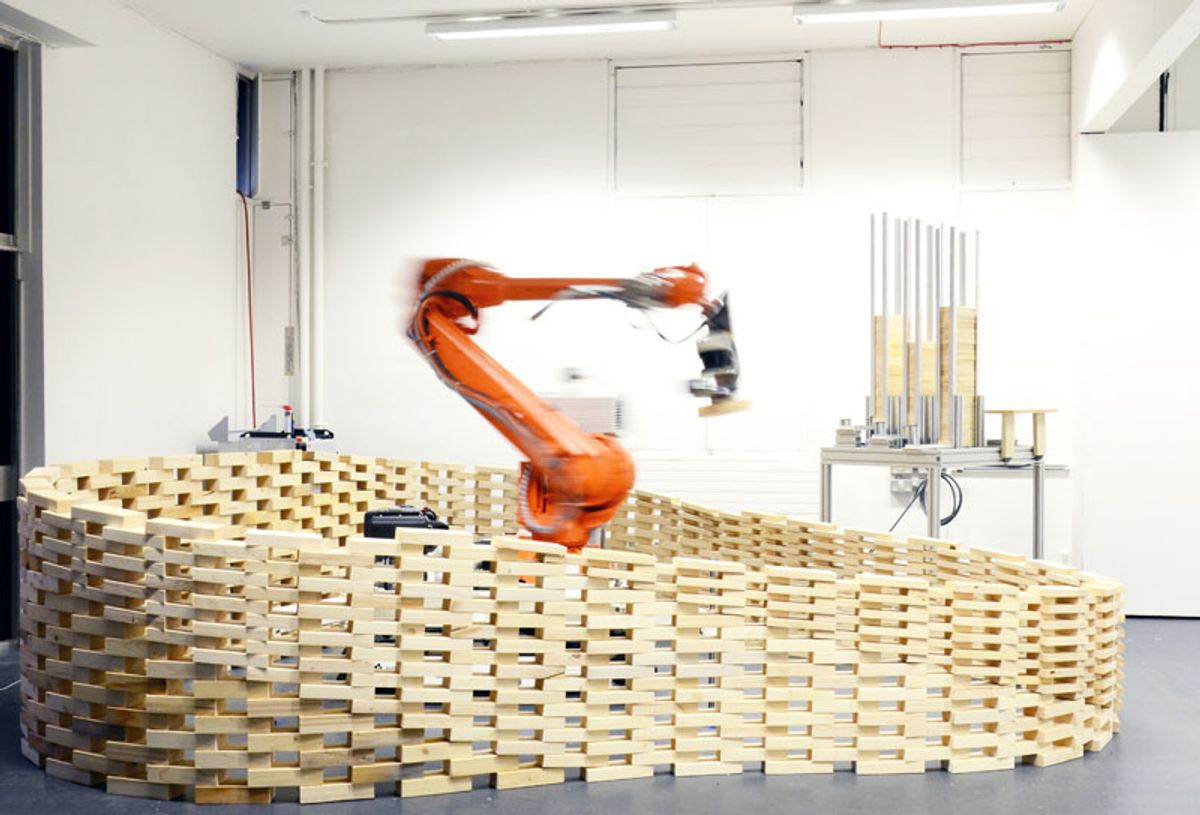Some of my roboticist colleagues at ETH Zurich are, somewhat surprisingly, architects. Fabio Gramazio and Matthias Kohler, both professors at ETH's Institute for Technology in Architecture, were among the first to use robots in architectural design. Since 2006 the duo has explored various manufacturing techniques, including both subtractive and additive fabrication, as well as a wide range of materials, to create astonishing structures entirely built by robots.
The use of robots, combined with digital design tools, means a new aesthetic becomes possible, with novel shapes and patterns that would be nearly impossible to achieve without the automated machines: industrial manipulators that are extremely precise and good at repetition.
Using robots, the two ETH architects, who run the Gramazio & Kohler design studio, have fabricated intricate building parts out of wood, concrete, bricks, and foam, and have used these parts to build complex, beautiful installations in Zurich, London, Barcelona, New York, and other locations.
The idea of using robotic systems as reconfigurable spaces or "smart furniture" is not new. But the way Gramazio and Kohler are using robots -- to actually build large environments -- is very innovative indeed. Though their creations thus far are limited in size, the architects are currently exploring the idea of applying robotic fabrication to the design and construction of high-rise buildings.
As you can see in the photos below, the results are impressive. In one of their projects, the architects fitted a manipulator robot in a modified freight container -- a "mobile fabrication unit" that could travel anywhere in the world. They took it to Manhattan a few years ago, where the robot built a 22-meter-long (72 feet) brick structure [photos below].
In another project, they used the robot as a milling machine, to create parts that could shape the acoustics of a room [photo below].
Some of their most interesting creations, though, are the ones that use robots to assemble elaborate environments.
The wooden structure consists of 16 contorted elements made from 372 slats. The entire construction is structural support, roof and skin of the building at the same time. The elements were constructed by a digitally controlled robot that cut and precisely placed the slats according to an algorithmic pattern. Each of the elements is individually rotated, producing a progression of subtly varied spaces. The logic of the openings and curvatures as well as the aesthetic details conform to the rules of wood construction. The digital processing bestows a new expression on the traditional wood material.
The architects are also collaborating with roboticists from the ECHORD project to give their robot more mobility. One idea is to use a base with tracks [photo below], and program the robot to recognize its position and surroundings. The biggest challenge is making sure the robot can handle construction tolerances and variations, adapting to changing conditions autonomously.
To learn more, take a look at Gramazio & Kohler's ETH website and their company website. Below, more photos of their creations and a video discussing their work.
Images: Gramazio & Kohler














